
31 minute read
Helping to make science useful
8FARMERS WEEKLY – farmersweekly.co.nz – December 20, 2021
Land Champions Helping to make science useful
When Trish Fraser arrived in New Zealand from Scotland to study, she had no idea she would still be here more than 30 years later. During that time, she has made a valuable contribution to the rural community as a soil scientist. Colin Williscroft reports.
PLANT & Food Research soil scientist Trish Fraser likes to take a practical approach to communicating science to farmers, believing that’s the most effective way of getting her message across.
Fraser, the 2020 Rural Woman of Influence award winner, has attended plenty of field days over the years and she believes the practical approach is appreciated by farmers.
“Farmers are kinesthetic learners and as such like to be able to see and touch things, so I try to have demonstrations that after you’ve seen it, hopefully you’ll remember it,” Fraser said.
“I try to think outside the square to make what I’m talking about memorable.”
An example Fraser gives is putting columns of different soil types into transparent tubes and then pouring water through them to show the effects of different management practices on the physical structure of soil.
She says the best compliment she got was when a farmer approached her after seeing one of her demonstrations and told her that although he had not come along wanting to learn about that, he certainly wouldn’t forget it.
“NZ farmers really do pick things up, but they need to see a good reason to change,” she said.
“They need to see the benefits and they want to understand the reasons why.
“If they can appreciate the issues, then the changes will be rapid.”
Fraser tries not to think of herself as a trailblazer for women but says in retrospect, she realises her passion and interest has had an impact on the communities she has served, despite some eyebrows being raised early on in her career.
“When I first started as a soil scientist about 30 years ago, the rural community was dominated by men,” she said.
“I knew I had to prove myself through the quality of my work. I attended quite a few field days to share my research with farmers on how to improve soil health and I was often the only woman there.
“Gradually they began to value and respect me for the work I did.”
She says there are a lot more women involved today, with plenty more students coming through. It’s particularly noticeable at conferences, she says, and there are a lot of young women now working as agronomists and fertiliser company representatives for example, which is a big change from when she began. Fraser did her undergraduate degree at
Aberdeen University in
Scotland. She went there thinking she was going to study horticulture but, in the end, studied botany – thinking it was probably quite like horticulture – and enjoyed it. Someone at the university then recommended she study soil science, so she picked it up in her second year and has not looked back.
After four years at Aberdeen, Fraser finished a bachelor of science degree with joint honours in plant and soil sciences, and then successfully applied for a scholarship to come to NZ to study towards a PhD in soil science at Lincoln.
Her focus at the time was investigating the fate of nitrogen in the soil under a cow’s urine patch, an issue that has in recent years become very topical, particularly in relation to water quality.
Originally Fraser thought she would be in NZ for three years.
“It’s fair to say I’ve overstayed a bit,” she said.
After finishing her PhD, Fraser got a job as a soil scientist at what was at the time the NZ Institute for Crop and Food Research, now Plant & Food Research, also in Lincoln.
Since then, her contribution to the cropping sector has revolved around working with it to understand interactions between soils, crops and the environment.
That included addressing a wide range of soil-related issues in the sector, such as delivering practical knowledge for farmers to balance productivity, environmental and system resilience outcomes.
She says providing farmers with useful information is one of the best parts of her job.
“If it doesn’t have a practical end-use, I find it’s much less appealing. I want to get the research findings out there so farmers can use it,” she said.
As well as having been part of several collaborative research and industry teams responsible for some key discoveries in the area of soil health, Fraser has played an important role in shaping the NZ Society for Soil Science.
A society member since 1989, she served as secretary for 20 years, was vice-president for two and became the first female president (2012-14), before serving as immediate pastpresident for another two years.
Today Fraser, who has raised three daughters along the way, is a science team leader at Plant & Food Research.
During her career she has mentored many scientists and directly supervised other technical staff and would like to inspire the next generation’s interest in sustainable production and communicating science directly to farmers and rural professionals through seeing research applied on-farm.
Fittingly, earlier this month she was honoured by being conferred with the highest award of Fellowship by the NZ Society of Soil Science. She received this prestigious award for her contributions to the advancement of soil science and the society over the past 30 years.
Her advice to women thinking about a career in the primary sector or its research is simple.
“If it’s something that you think you’ll enjoy, then do it,” she said.
“If you’re passionate about it, it’s more likely that you’ll do well.”
HANDS-ON: When it comes to demonstrating science to those who could benefit from it, Trish Fraser likes to get out in the field. Photo: Plant & Food Research
If it doesn’t have a practical end-use, I find it much less appealing. I want to get information out there so farmers can use it.
Trish Fraser Scientist

Previously trading as CR McPhail Ltd
NZ TOURS BOOK NOW WITH NO DESPOSIT! 2022
VISIT OUR WEBSITE FOR MORE DETAILS ON THESE NZ & AUS 2022 TOURS
King Country & Taranaki | March
Quilt, Fibre & Art Tour | March
Marlborough & Tasman | April Northland | June
Central Otago Trails E-Bike | Oct www.farmandleisuretours.nz (06) 357 1644
AGRICULTURAL TOURS THROUGHOUT THE WORLD
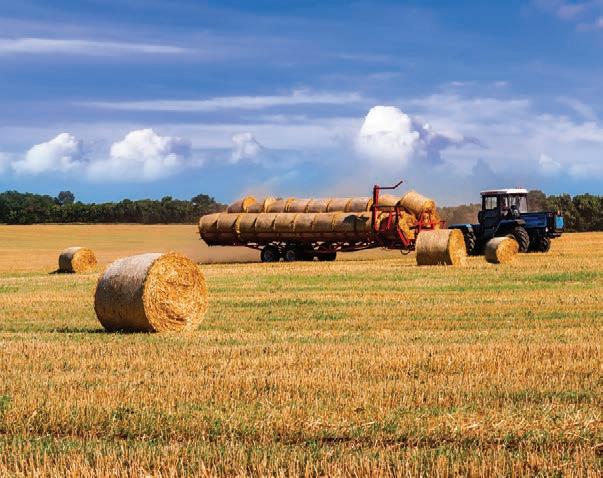
Outback Queensland | April Pilbara Cattle Tour | June Red Centre Beef Cattle Tour | July Kimberley Ag Highlights | Aug South Australia & Kangaroo Island | Oct
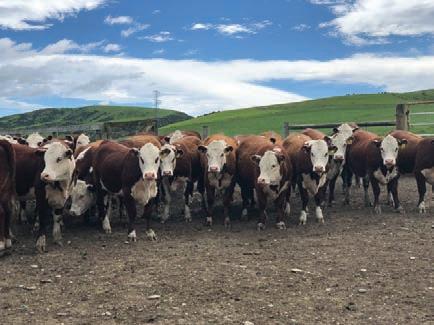
Scientist heads off elusive invaders
New Zealand boasts a constellation of rising female scientists helping restore gender balance to the field and communicating with the public in ways non-scientists can relate to. Doctors Siouxsie Wiles and Michelle “Nano-girl” Dickinson were helping communicate complex and pressing science issues well before covid came along. Added to this universe of talent is Dr Rebecca McDougal, a Scion forest pathologist, biosecurity award finalist, and Farmers Weekly land champion. She spoke to Richard
Rennie.
GROWING up on the Central Plateau, Dr Rebecca McDougal was never far from a pine tree and it was a primary school project that first sparked her interest in the ubiquitous flora.
Today she is part of a Scion team at the leading-edge of understanding complex tree diseases that are threatening to wipe out a national taonga and seriously damage a valuable export crop.
Her particular area of expertise is around molecular forest pathology, focusing upon plant pathogens and most recently Phytophthora pluvialis.
Like pine trees, the plant damaging water moulds are plentiful and they affect multiple plant species.
Despite 170 species of phytophthora being discovered between 100-500 are still thought to be out in the ether, yet to be identified.
For NZ foresters, P. pluvialis, or red needle cast, was first seen in 2008 and is carried through pine forests in airborne water droplets, causing pine needles to turn yellow, then red and then be blown away months later.
In a bad year it can cause a 40% loss of productivity in a forest, stunting tree growth until infected needles grow back. So far it is only found here, Oregon and more recently the UK.
“Whether it is climate change, or our ability to better detect them, Phytophthora are becoming more prevalent,” McDougal said.
With thousands of hectares of forests vulnerable to infection, a rapid diagnostic tool has been vital for detection, and McDougal has been instrumental in developing leading-edge molecular techniques to help determine the species affecting forests.
“Trees are not like kiwifruit or vineyards where they can be replaced and return to production in a short time, there are huge benefits to industry to identify infections early,” she said.
Early indications are that copper treatments can prove useful in controlling the cast’s spread, a control already applied in some areas for other diseases.
In the meantime, her work has also focused on dealing with a crisis visited upon one of NZ’s most sacred taonga, kauri dieback disease.
It is made more complex to detect due to it sometimes taking years for trees to exhibit visible signs of disease.
Scientists are hoping to find disease resistant trees in the natural population, and encouragingly the infection appears to vary across different kauri populations.
Her work here has studied the interaction between Phytophthora, the tree, and the soil to find opportunities to disrupt the interaction between the three.
As New Zealanders launch into an era of mass tree planting, both natives and exotics, McDougal’s work is also focused on nurseries. She is working with partners to develop a bio-secure system for plant movement that will ensure damaging pests and diseases are not included in the growing deliveries.
Invasive myrtle rust is a recent disease that has had some of its passage around NZ secured by way of nursery transfer, with some tree species now under threat from its spread.
“It would be very rewarding to see such a system get up and running here. We have seen in the United States how restoration projects have devastated local tree numbers due to diseases being transferred in with the project,” she said.
As the world wrestles with a disease arguably as tough to manage as the elusive Phytophthora, McDougal believes NZ’s biosecurity system has stepped up to the challenge that greater travel and trade has brought to our borders.
“We probably spend a lot more than other countries, but we also know we have a lot at stake. I have been very fortunate to be part of a team involved in it,” she said.
Meanwhile, her ability to speak across a spectrum of scientific understanding is helping maintain trust in science at a time when social media has made many supposed experts cast doubt upon conventions of research, science and discovery.
McDougal was nominated by the Forest Owners Association for innovation and communication in forest biosecurity.
Winners of the NZ Biosecurity Awards will be announced in February.
Dr Rebecca McDougal Scion

RESEARCH: Dr Rebecca McDougal is part of a Scion team at the leading-edge of understanding complex tree diseases that are threatening to wipe out a national taonga.
Farmer. Kellogger. Leader.
Step up in 2022 as an agri-sector leader of change.
Farmers, fishers, growers, foresters and agri-business professionals, applications are open for the Kellogg Rural Leadership Programmes based in Whanganui and Lincoln, beginning May and June 2022. Register now at ruralleaders.co.nz/kellogg/
Rewarding career of discovery
Deer Industry New Zealand producer manager Tony Pearse admits his career was not necessarily planned, but rather one of one of huge discovery. He talked with
Annette Scott.
AS TONY Pearse looks back on a long and exciting career in the deer industry, he says what evolved is best described as a “huge career of discovery”.
“There’s never been a great amount of planning in my life, but what has come out every step of the way has been thoroughly enjoyable and hugely rewarding,” Pearse said.
Pearse, who has been around the deer industry for 40-odd years, retired last month – taking with him a reputation he says is “humbling to the core”.
Deer Industry New Zealand (DINZ) chair Ian Walker says NZ has an extraordinary number of individuals who have made a huge contribution to the deer industry, often going beyond the call of duty.
“Many of these characters are recognised as legends in the deer industry and I would recognise Tony as one of those iconic contributors,” Walker said.
Pearse is a deer farmer in his own right, has been a deer farm manager, worked for AgResearch at Invermay, was involved in many research projects, has worked in commercial companies in relation to the deer industry and for DINZ and the NZ Deer Farmers Association (DFA).
His range of experience and contacts within the industry, his ability to communicate at all levels, his penchant for fastidiously recording events in words or pictures and his quirky sense of humour have earned him the respect and mana of which he is deserving.
“This is a reflection of why Tony is recognised within the industry as a good buggar,” he said.
Pearse says his role as producer manager became a way of life and a privilege.
“It leaves great friends, unique and valued experiences, highlights, laughter and enjoyment at every turn,” Pearse said.
“All the time it’s been about the teamwork, fuelled by a passion for great deer farming and being engaged in the industry.”
Imagine being a part of a wide talent and essentially producerinspired team that has produced the Johnes Management Research group and then DeerPRO.
Then part of a team with the DFA executive that has facilitated the Next Generation Programme and a cog in the wider DINZ/ DFA team that ran Focus Farms at national and regional level.
Not overlooking Pearse’s involvement in producing environment manuals, organising conferences, industry competitions and the environmental awards that were groundbreaking for the pastoral industry at the time.
“Truly this job, and my role in it, has been easy when the industry team and its leadership talent is behind you,” he said.
“That’s been the secret.”
In 2000 Pearse was awarded the NZ deer industry award for outstanding contribution to the industry.
In 2003 he received the Sir Arthur Ward award recognising successful application of research and experience to an aspect of animal production in NZ.
Pearse has become widely recognised as a world-leading authority on practical deer farming.
But he could well have ended up at a museum scrutinising rocks and fossils.
His first degree was a BSc in geology and zoology, his thesis was on the Maerewhenua diggings in North Otago and he intended to do a PhD in geology, but fate took him elsewhere.
“I wandered into the wool science building at Lincoln and ended up pursuing a Masters degree on the wool of the Tukidale, a Romney-based variant like the Drysdale thought to have an exciting potential at the time for its hairy fast-growing fleece and suitability for carpet fibre,” he said.
Pearse got involved in farming in North Otago before moving to his home patch of Saddle Hill, near Mosgiel, where he and his wife Julie ran 150 town supply dairy cows and 2000 sheep in partnership with Julie’s father.
Cows were eventually replaced with deer and the opportunity to manage an investors’ syndicate based on deer launched Pearse’s deer journey in 1979.
In 1983 a job at Invermay Research Centre popped up.
It was this role as an animal technician in the Invermay deer research team, including managing Invermay’s large deer research farm, where his lifelong love of deer and the industry became incurable.
He followed a happy and productive 19 years at Invermay, during which he did much to create enduring links between NZ deer farming and overseas deer interests.
He was introduced to what he describes as “an extraordinary world of people”, worked in Canada, the US, United Arab Emirates, Japan, China, Indonesia, Malaysia and Thailand and Korea, through his involvement in the industry.
Pearse was elected to the NZDFA Council in 2001 and in 2002 took up the role as producer manager with the newly created DINZ, which he says was a great move.
“It has been a privilege every step of the way, I have not one regret. I thank you all,” he said.
“In retirement I will focus on farming our 80ha at Saddle Hill.
“I owe Julie a lot more time; we have a son dairy farming in North Canterbury, so more family time and time with our granddaughter.”

DESTINED: Tony Pearse has no regrets for his 40-odd years in the deer industry, coming from career beginnings that could well have seen him at a museum scrutinising rocks and fossils.
Tony Pearse Deer Industry NZ


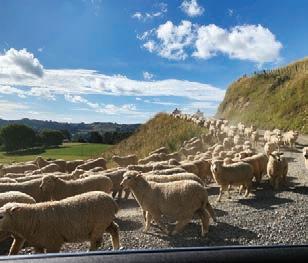
Do you have the skills needed to address local and global challenges in the rapidly changing Food & Agribusiness sector?
New Zealand’s economy is dominated by the agribusiness sector – increasing your knowledge of it will enable you to step up and become one of the leaders that the food & agribusiness industry is looking for. Why study for a postgrad degree in Agribusiness at Massey University?
• Internationally recognised academics taking you through real world case studies addressing current trends and challenges • Study from home, blend study with work, everything is online – even the class discussions! • Scholarships are available • Industry relevant topics can be studied through thesis research • Great demand and fast track to career progression in the agribusiness sector • Graduates from this qual have won at international case study competitions • Graduates can be eligible for FoodHQ
IFAMA scholarships • Kellogg alumni get 60 credits towards the postgrad degree
Getting women into meat sector
The fact Cromwell butcher Jayne McMillan gets asked about the best way to cook a piece of meat now speaks more about her deep knowledge of red meat and what to do with it, than it does about any stereotyped idea because she’s a woman. She spoke with Richard Rennie.
FOUR years into owning The Fridge Butchery in the growing Otago town of Cromwell, Jayne McMillan is making a mark well beyond the region, heading up a quiet revolution in the meat sector to encourage more women to choose a career within it.
McMillan is the face of She Looks Like Me – Aotearoa, part of a global industry campaign to highlight female role models and point to career pathways for women keen to join the red meat sector.
She proves to be the ideal candidate to front such a campaign, straddling the industry with a breadth of experience stretching back 27 years and founded on a degree in microbiology that first had her working in the lab at Alliance’s Lorneville plant.
She also features in a video that covers a “day in the life” of the Cromwell butcher. In it she outlines a career that took her from the Lorneville plant to manage a lab at the Mataura works, then a two-year secondment to a quality control role with the New Zealand Lamb company based in Los Angeles.
This included guiding products through the assorted hoops that are United States Department of Agriculture regulations and on her return, she moved to a systems role at Alliance.
On spying the butchery for sale in Cromwell, she realised she had spent 26 years looking for her calling and had found it in the boutique Otago business.
“If I was looking back 26 years at my younger self when I started with Alliance, I guess at the time I did not have an absolute clear direction on where I wanted to be. But now 26 years on I am extremely happy and would not want to be anywhere else,” McMillan said.
This includes spending time not only in the butchery itself, but also calling on farmer suppliers around the region and flying to Alliance’s Christchurch office to continue working in systems support as the company transitions to a new computing system.
While defined as a butchery, The Fridge reflects customers’ desire to better understand how to cook meat better and what to cook it with.
The business has grown to include assorted condiments and chutneys made in-house, cheeses, and even a vegan line of products.
With her deep understanding of microbiology, it is almost inevitable McMillan has pushed beyond the traditional chilled red meat products to include dry aged and lacto-fermented beef and salami products.
“The beauty of having a background in microbiology is that you know how far you can push products in terms of aging and storing,” she said.
Having spent plenty of time in meat processing plants, she also adds another dimension to clients using her home kill service.
“They were initially surprised when a woman turned up, but I am able to go through the offal with them and point out how well the stock are doing and if there are any issues that may be there. They appreciate that,” she said.
While not claiming to be doing much different to what male butchers may do, she notes some customers may feel more comfortable seeking cooking advice from her, despite many male butchers also being accomplished chefs.
Within the business she is opening pathways for more women to engage in butchery as a career. Of her five staff, four are women, including one she has taken on as an apprentice, and another proposed for the new year.
“There are a few other female butchers around NZ and the profile has been helped by A Lady Butcher. It would be great to see this network build and the campaign will do much to help that,” she said.
In the meantime, her advice to women considering a job in the sector is to “just do it”.
“My career has been so varied and I have had so many opportunities. It is awesome, I am loving it,” she said.
PRIVILEGE: Jayne McMillan is proud to be the face of She Looks Like Me – Aotearoa campaign to promote women in the meat industry.
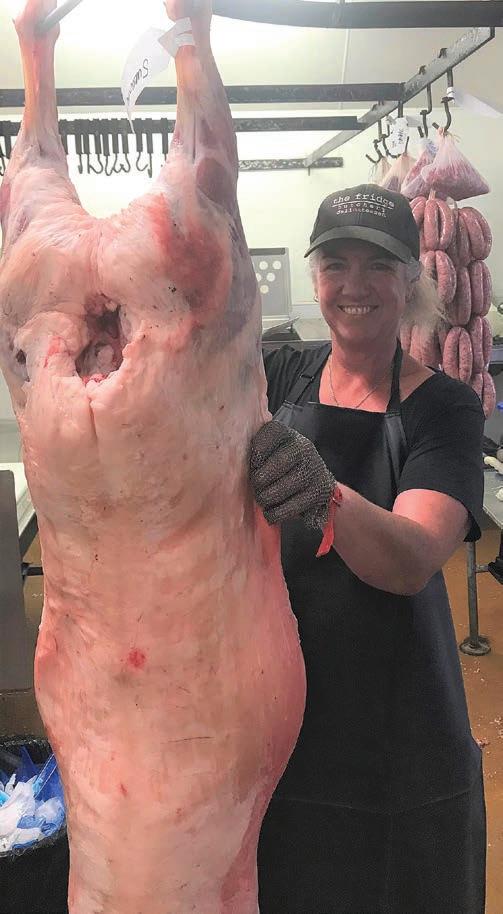
DON’T LET YELLOW BRISTLE GRASS INSIDE YOUR FARM GATE!

This invasive pest plant is notoriously hard to get rid of and poses a serious threat to pasture. Prevention is key.
Yellow bristle grass is commonly found on roadsides in the Waikato. It is an upright annual-seeding plant growing 25-45cm high. In open pasture, its first leaves are typically parallel to the ground, and it’s difficult to see until it produces a seed head. Seed heads emerge from about mid-January until about the first frost, during which time it is unpalatable to animals, allowing it to spread further. • Leaves are yellow-green to green and usually red or purple at the base. • Leaves are flat, hairless, soft and twisted. • Seed heads are a cylindrical spike 2.5cm-10cm long. • Seed heads have bristles which are initially green but turn golden-brown. You’re likely to first spot yellow bristle grass on roadsides, disturbed ground/waste areas, edges of maize crops and around the maize silage pit. If you require advice on the control of yellow bristle grass on your property please contact your local regional council.
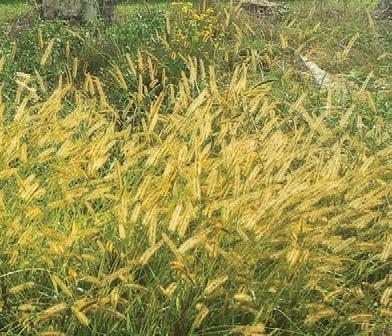

How to prevent yellow bristle grass from taking hold on your farm
DON’T! 8 Graze cows on the roadside while it’s in seed. 8 Get hay from properties with yellow bristle grass. 8 Leave bare patches in your paddocks near roadside infestations (e.g feeding silage close to the fenceline).
DO! 9 Clean mowers after mowing road frontage. 9 Leave a swath of long grass between your fence and mown roadside to act as a buffer for seed. 9 Clean any equipment after use in an infested area and ensure any machinery, such as harvesters, which are coming on to your farm are clean. 9 Spray or dig out small patches as soon as they are found. Avoid spraying cropping paddocks to the fenceline. Leave a strip of grass around the edge of the crop to help prevent yellow bristle grass from establishing.
Land Champions A lifelong passion for wool
Graeme Bell traces his love of wool to being seduced by the first Merino shearing competition held in Alexandra in 1961. He reflects on a lifetime interest in shearing and wool with Neal Wallace.
THE smell and feel of wool was imprinted on Graeme Bell while at primary school.
Bell vividly recalls as a 10-yearold his introduction to wool and the annual Merino shearing competition, initially held in the Alexandra Town Hall opposite his home, which led to a 50-plus years career in the wool industry.
Fascinated as he watched sheep being unloaded for the initial event of the NZ Golden Fleece Shearing Championships in 1961, Bell wagged school to help.
“People gave me fleeces to carry to the wool table and then to the wool press, then they would lift me up to trample the bale,” he recalled of that first year.
“I got the smell of wool from that.”
In subsequent years his teachers accepted his interest in wool and shearing was greater than sitting in class.
“The deputy headmaster at the Alexandra Primary School would walk past the town hall on his way to school in the morning and would see me pushing sheep up onto the stage and he would ask ‘Will I mark you down as absent today, Bell?’,” he said.
Sixty years later the Alexandrabased PGG Wrightson wool agent’s passion for the fibre is undiminished as is his commitment to the annual NZ Merino Shears, being involved in every event since it began in 1961.
He was lured to the shearing contest by its excitement but also the glamour and wealth evident in the display of Mark III Zephyr cars and Holden utes that the contestants drove.
On leaving school at age 18, Bell worked as a rousie then graduated to crutching and shearing.
But it was wool handling that was his first love and in 1970 he completed a wool classing course at what was then known as Lincoln College.
Four years later he launched his own shearing gang, which he ran until 1987, shearing fine, halfbred and crossbred sheep throughout Central Otago.
Alexandra shearing contractors Peter and Elsie Lyon bought his business.
Bell’s commitment to the industry, and especially the renamed NZ Merino Shears, has been unquestioning, both in practical roles helping set up and dismantle the infrastructure, but also governance.
He was president for the jubilee year, 2011-12.
Bell also competed in the event as a woolhandler, winning titles in 1979 and 1981.
Bell’s father was a bootmaker and his family opened their home to contestants during competitions, but also made leather strops for competitors and leather shearing boots for prizes.
The contest was established by farmers to lift the standard of shearing and woolhandling, to use judging and competition to create a quality benchmark for the industry.
“They were motivated to make sure there was consistent quality within the industry,” he said.
“They want to ensure consistency of quality.”
He says it has achieved what those founders sought.
From having a few dominate the early contests, the pool of potential winners grew each year as industry standards grew and quality workmanship became a daily expectation, not something to focus on ahead of competition.
In later years the event has become more of a sporting occasion, but Bell says it remains a way of maintaining and improving shearing and woolhandling quality.
“They have become athletes,” he said.
The Merino shears also became an industry celebration by displaying wool harvesting, processing and clothing.
From benchmarking quality harvesting, Bell says other attributes such as sustainable production and management have been able to evolve.
He has seen the highs and lows of the Merino industry, including the early 1990s when what he called “micron madness” struck the industry as sheep prices soared on the back of high wool returns and the breed expanded as far north as Auckland.
Bell says it harmed the Merino industry as some sheep that should have been culled were kept for breeding.
“Sheep came from all directions to sell their gold,” he said.
Reflecting on his career, Bell says one of his most memorable recollections was in 2011, the event’s jubilee, which coincided with the Rugby World Cup hosted in NZ.
The organisers invited shearers and woolhandlers from South Africa and Australia to compete against a team from NZ.
Teams consisted of blade, machine shearers and woolhandlers.
While South Africa dominated the blade contest and Australia the machine, NZ were consistent overall and won the event.
It was a great spectator sport, he says, as was a subsequent North Island versus South Island event, which pitted shearers, woolhandlers and pressers in a race.
Bell comes from an era when community service was highly valued and he has served two terms on the Central Otago District Council followed by two terms on the Otago Regional Council.
Bell stresses that others have made just as significant contributions to the running of the Merino shears, citing Don Clarke, Don Moffatt, Alastair Eckhoff, Ted Dreckow, Greg Stuart, Richard Stevens, Mervyn and Helen Kinaston and Barbara Newton, to name a few.
The longevity of the competition is graphically illustrated by the historic connections of the current president Lane McSkimming.
His father, Murray, won the first Merino shearing competition in 1961 and a trophy built from his handpiece has been donated to someone who has made a significant contribution to shearing.
The handpiece, mounted on a piece of wood, is so worn from work, that the tension knob is heavily eroded.
Bell is determined the shearing competition will continue and he intends to be involved, but says he would like more interest from young people to help ensure that.
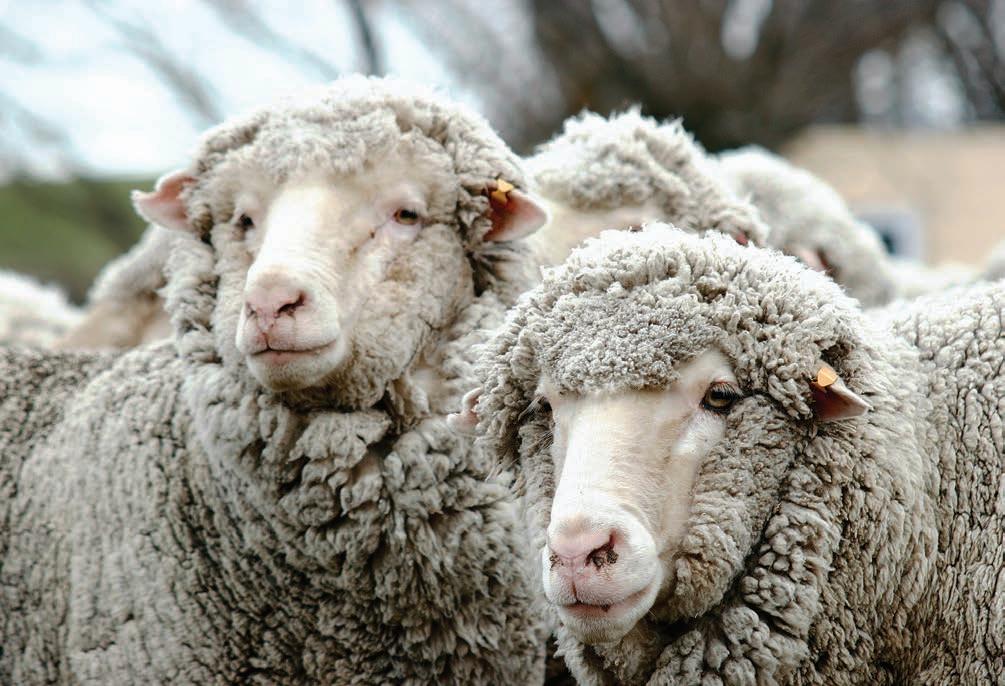
WAX AND WANE: Graeme Bell has seen the highs and lows of the Merino industry.
Graeme Bell NZ Merino Shears
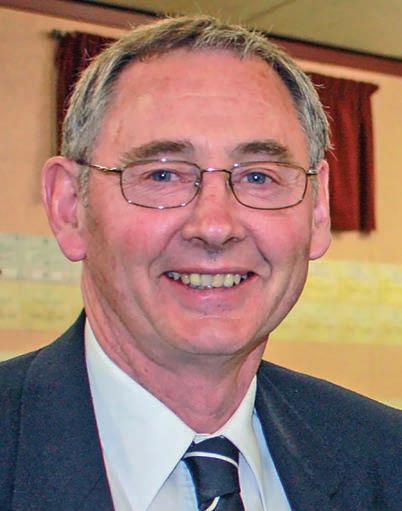
DECADES OF SERVICE: Graeme Bell has been involved in the annual NZ Merino Shears since the event started in 1961.
CELEBRATING EXCELLENCE IN WATER MANAGEMENT
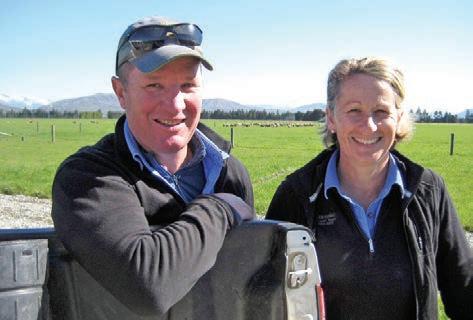

The 2021 Trailblazer Award acknowledges the world-class leadership of New Zealand farmers in regards to sustainable irrigation management.
SUPREME AWARD WINNERS

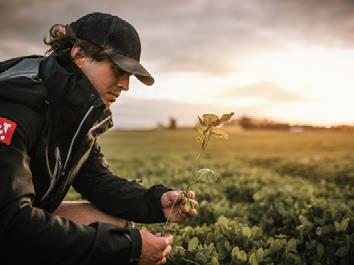



ANGUS & ELISE AITKEN Trailblazer Sustainable Irrigation Supreme Award Winners
sponsored by Zimmatic
Sustainable Irrigation Management Award
sponsored by Irricon Resource Solutions
RICHARD & ANNABELLE SUBTIL Environmental Stewardship & Community Award
sponsored by Farmers Weekly
SIMON & LOU WHITE
Opportunities & Diversification Award sponsored by Vantage NZ
Land Champions Navigating the waves of change
Vanessa Winning
WHAT a year – as an Auckland resident it has been challenging on many fronts, not least the covid response and multiple lockdowns, with this latest one lasting much longer than anyone would have expected. Coming out the other end we now need to consider how we manage living with covid as a country and the clean-up required for our economy and mental and physical health of our people.
On top of this pandemic, the idea of ‘transformational’ change is causing pretty much every part of the public sector, and regulation that follows, to be thrown up in the air – and I don’t say this flippantly.
Farmers and growers are at the end of this, impacted by every department of government intentionally or not. There are things that have been kicked down the road in the past that do need to come to a head – RMA reform, building reform are just two of them, and there are things that have been on a trajectory for consecutive governments, such as the water quality improvements, climate change, and the health implications from drinking water – so not new. But what is new is that it’s all being decided in a majority government environment without a lot of discussion about the unintended consequences of those changes or the impact of the changes on the other areas also being changed.
A classic example being changes to the dam safety regulations, which have been in discussion for 20 years, and is now at the final drafting and will have an impact on farmers’ ability to create on farm storage to mitigate climate change and reduce their reliance on water – two other outcomes being asked of them at the same time.
There very much seems to be a lack of holistic thinking to policy, or a hierarchy of desired outcomes when regulation is being changed in isolation of each other or by those with limited understanding on what on the ground impact it can have. Uncertainty breeds anxiety. And using crisis to describe every issue is leading to fatigue.
As farmers and growers, there are many tactical and short-term things you need to worry about and manage on your farm, and this wave of external activity adds stress and uncertainty, which is why it is so important you remain engaged with your levy bodies and membership organisations such as ourselves to help you get practical workable change in policy and support for implementation.
It’s also important that we all take a long-term lens to both regulatory change and our investment in our farms and feel confident that while the operating model may be different, the future for New Zealand food and fibre is bright.
There are massive positives to come out of this year of uncertainty though, and covid while a massive inconvenience, has once again demonstrated the importance of the agri sector, not just to the NZ economy, which is significant, but to keeping New Zealanders fed with quality produce, which also helps our internal anxiety with full shelves in the supermarket, which other countries have struggled with. It has also demonstrated in a time of world stress, the most important component to life is food and water.
There are also wins that haven’t always been celebrated along the way, such as the changes to the original wintering regs; changes to Water Services Bill, now with a seven-year implementation programme; improvements to the climate change setting requirements; a partnership with He Waka Eke Noa; and a massive investment in time and thinking from MPI with the water availability and security report. It’s important that we take the time to look at these as the way to work through policy with a majority government wanting to make change while they can.
The fact that the Government is looking at how to build water resilience in places impacted by a challenging climate and to future support land-use change is a huge improvement. We now need to talk about the way this has community, iwi and decarbonising impacts as well as productive use improvements and, therefore, how we fund it. This is a huge step forward for NZ agriculture where we have been somewhat blasé about where our water comes from in large parts of our country.
For the future, I would like to see the sectors collectively engaging, informing and building understanding with local and central policymakers on both sides of the house. We have a duty to improve competence in government and ensure less vagueness – there is going to be a massive clean-up required for the economy and mental health of our people once the immediate physical health issues of covid wane.
As a group of sectors, the food and fibre producers of NZ we do need to listen more and be conscious of the needs of our consumers and we do need to understand the desires for a long-term environmental improvement – every farmer I work with and know believes the same. Often differences are due to the timeframes and the activities suggested.

REFLECT: Irrigation NZ chief executive Vanessa Winning says while the industry, and country, has had a challenging year, it’s important to celebrate the positive milestones too.

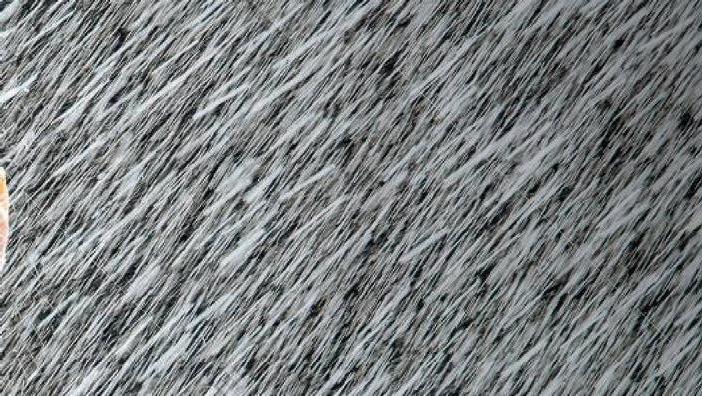
Next time I’ll check WeatherWatch


Don’t let it rain on your parade.
Plan your day with WeatherWatch and get New Zealand’s most accurate rain forecasting available across the country, anytime.

